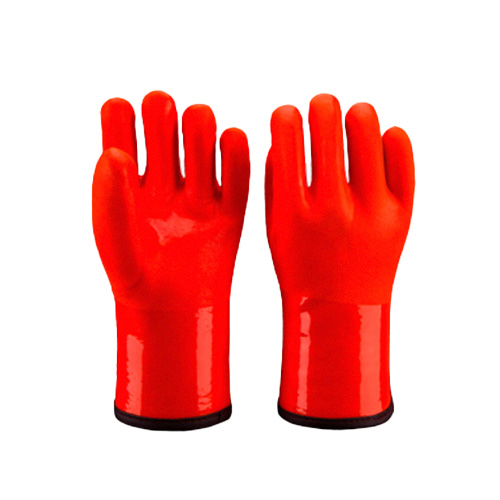PVC gloves are everywhere—from medical examinations and food processing to cleaning services and even the nail care industry. They are thick, durable, and offer excellent protection against diluted acids and alkalis such as dilute sulfuric acid, sodium hydroxide, bleach, corrosive agents, and alcohol. With strong chemical resistance and great cost-effectiveness, they have become the top alternative to latex and nitrile gloves, making them a popular choice in various industries for personal protective equipment. Next, we will give you a comprehensive introduction to this glove.

What Are PVC Gloves?
PVC gloves are made from polyvinyl chloride (PVC) and are specifically designed to protect against chemicals, oils, and other harmful substances. Since PVC gloves are latex-free, they do not trigger latex allergies—making them an ideal option for individuals who are allergic to natural rubber latex.
Key Features of PVC Gloves
Chemical Resistance
PVC gloves provide strong protection against acids, alkalis, salts, alcohols, and certain mild solvents. Their excellent chemical resistance helps prevent unnecessary harm to the hands from hazardous substances.
Water and Oil Resistance
Due to their dense molecular structure, PVC gloves can effectively block moisture, gasoline, and other oils, ensuring that liquids do not penetrate the glove’s interior.
Latex-Free
Like nitrile gloves, PVC gloves contain no latex proteins and therefore do not cause allergic reactions. They are an excellent substitute for latex gloves, especially for latex-sensitive individuals.
Cost-Effective
Compared to nitrile and latex gloves, PVC gloves offer significantly better value for money and are ideal for bulk use due to their affordable price.

Common Uses of PVC Gloves
PVC gloves are widely used across various industries due to their outstanding performance, making them a popular choice for hand protection. The following are some of the industries where they are commonly applied:
Food Processing and Catering
To prevent food contamination and maintain hygiene during operations, disposable or food-grade PVC gloves are commonly used.
Housekeeping and Cleaning Services
To protect the skin from cleaning agents, dishwashing liquids, disinfectants, and other chemicals, household PVC gloves are typically used. They help prevent skin dryness and allergies while allowing safe completion of chores like mopping, cleaning toilets, and washing dishes.
Beauty and Hairdressing Industry
PVC gloves are used during hair dyeing and perming to prevent direct contact between chemicals and the skin. They offer both safety and ease of operation without compromising hand dexterity.
Chemical Labs and Light Industry
Thanks to their strong chemical resistance, PVC gloves are ideal for tasks like sample handling and industrial cleaning, where corrosive or irritating chemicals are involved.
Medical Care and Health Management
PVC gloves help avoid cross-contamination and are suitable for non-sterile tasks like surface care, patient cleaning, and basic examinations. While nitrile and latex are preferred for high-risk medical procedures, PVC remains a budget-friendly option.

How to Choose the Right PVC Gloves
Material
Start by identifying the specific risks in your work or glove usage environment. Then, choose PVC gloves made from materials that provide the necessary protection for those risks.
Size
Refer to the sizing chart provided by the supplier to choose the right size, ensuring comfort, flexibility, and reduced hand fatigue.
Certification
Check if the gloves meet relevant safety standards and regulations or if the supplier provides proper certification for the product.
Price
While price is an important factor, remember the saying: “you get what you pay for.” Choose the gloves that offer the best value within your budget.
Conclusion
With a clear understanding of PVC gloves and their application scenarios, you can choose the most suitable gloves for your needs, ensuring your hands are well protected and able to work efficiently.
If you’re interested in PVC gloves or want to make a purchase, please contact us as soon as possible—we’re available 24/7 to assist you.
How to Measure Glove Sizes – Source: AIBON
Latex gloves– Source: AIBON
Safety gloves– Source: AIBON
Working gloves– Source: AIBON

